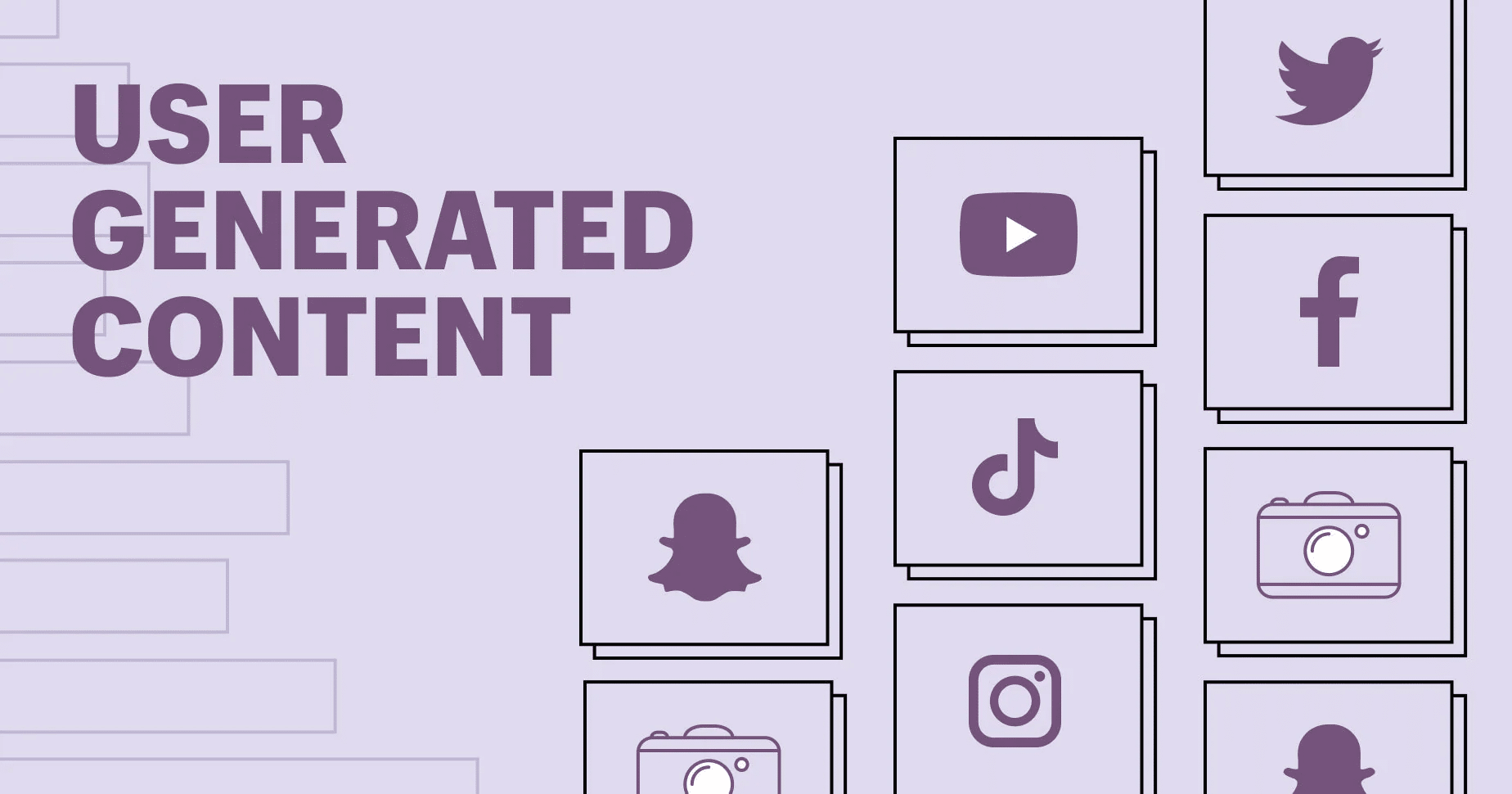Your search for impactful marketing strategies ends here. There’s one not-so-new kid in town that everyone is suddenly talking about, and it’s not just a trend but a game-changer: User-Generated Content (UGC).
When was the last time you bought something significant without peeking at reviews or seeking opinions from peers?
Today’s consumers want more than a sales pitch; they crave authenticity. That’s where UGC steps in. It’s the unfiltered voice of your audience, speaking volumes about your brand without the marketing jargon.
This blog is your backstage pass to understanding the undeniable power of UGC in modern marketing, focusing on its essential Key Performance Indicators (KPIs). No jargon, no fluff—just the essentials to revolutionize your strategy.
Welcome to a world where your audience takes center stage, and UGC becomes your secret recipe for success.
UGC Campaign KPIs For Different Marketing Touchpoints
From websites to social media, emails to digital displays. These metrics serve as your compass, guiding your journey toward UGC campaign success across diverse platforms. Ready to explore your guide to UGC metrics?
1. UGC Campaign KPIs For Websites
- Dwell Time: Measure the time visitors spend engaging with UGC on your website. Increased dwell time indicates content relevance and interest.
- Click-Through Rates (CTR): Track the percentage of users clicking on UGC elements or calls-to-action. Higher CTR reflects content effectiveness.
- Conversion Rates: Evaluate how UGC contributes to conversions—such as purchases, form submissions, or downloads—on the website.
2. UGC Campaign KPIs For Social Media
- Engagement Rate: Assess likes, shares, comments, and overall engagement on UGC posts. High engagement signifies content resonance.
- Shareability: Measure the rate at which UGC gets shared across social platforms. Higher shares indicate content virality and impact.
- Brand Mentions and Hashtag Performance: Track brand mentions and hashtag usage. Increased mentions indicate brand visibility and advocacy.
3. UGC Campaign KPIs For Email Campaigns
- Open Rates: Measure the percentage of recipients who open emails containing UGC. Higher open rates indicate content relevance.
- Click-Through Rates (CTR): Track the percentage of email recipients who click on UGC elements or links. Higher CTR reflects content effectiveness.
- Conversion Rates: Evaluate how UGC in emails contributes to desired actions, such as purchases or sign-ups.
4. UGC Campaign KPIs For Social Ads
- Ad Engagement: Monitor likes, shares, comments, and overall engagement on UGC-based social ads. High engagement signifies content effectiveness.
- Conversion Rates: Evaluate how UGC in social ads influences conversions—such as website visits or purchases.
- Return on Ad Spend (ROAS): Measure the revenue generated against the cost of UGC-based social ads.
5. UGC Campaign KPIs For Digital Displays
- Impressions and Reach: Assess the number of views and reach of UGC displayed on digital screens.
- Interaction Rates: Measure the rate at which viewers interact with displayed UGC, such as scanning QR codes or engaging with touch screens.
- Impact on Foot Traffic or Conversions: Analyze how UGC on digital displays impacts store visits or desired actions by viewers.
Advanced Strategies for UGC Optimization
Welcome to an exploration of advanced techniques designed to supercharge your User-Generated Content (UGC) strategy across diverse marketing channels.
These methods are tailored to align with specific Key Performance Indicators (KPIs), ensuring measurable success in your marketing endeavors.
1. A/B Testing for Website UGC
When it comes to leveraging User-Generated Content on websites, A/B testing stands as a pivotal strategy. By testing different UGC elements such as images, CTAs, or placements, the significance lies in enhancing overall performance. A/B testing enables you to refine and optimize these elements for maximum impact.
2. Importance of Testing Variations
Testing variations in UGC elements allows for a deeper understanding of what resonates with your audience. Whether it’s a user-generated image or a testimonial placement, these tests refine the elements that contribute most to engagement and conversions.
3. Benefits of A/B Testing
A/B testing facilitates an improvement in conversion rates by identifying high-performing UGC elements. It also enhances user engagement metrics, influencing factors like time spent on the site and interaction rates. Real-world examples will further underscore the impact of these optimizations.
4. Advanced Audience Segmentation for Email Campaigns
Unlocking the potential of UGC in email marketing involves sophisticated audience segmentation. Refining techniques for segmenting audiences effectively can significantly impact open rates and overall engagement.
5. Techniques for Precision Segmentation
Explore techniques that enable precise segmentation for better engagement. By understanding how to segment your audience effectively, you can tailor UGC content to resonate more strongly, thereby enhancing campaign performance.
6. Optimizing UGC for Social Media Platforms
Each social media platform has its dynamics. Tailoring UGC content to fit these platforms is vital. The approaches detailed here focus on optimizing UGC across various social channels, ensuring content resonates effectively.
7. Boosting Engagement Metrics
Elevate your engagement metrics by implementing strategic tactics like prompting shares, encouraging comments, and fostering brand mentions. Case studies will illustrate successful UGC optimization on diverse social platforms.
8. Data-Driven UGC Optimization
Analytics plays a major role in refining and enhancing UGC strategies. Learn how to interpret data to make informed decisions that align with your KPIs. Implement data-driven insights to optimize your UGC performance for measurable success.
This journey through advanced UGC optimization techniques is designed to empower your marketing strategies. By applying these insights, you’ll drive impactful results and measurable improvements in line with your unique KPIs.
Key Factors Indicating The Success Of UGC Marketing
Beyond the numbers and metrics, the success of User-Generated Content (UGC) campaigns hinges on foundational elements. These factors form the backbone of effective UGC strategies, driving authentic connections and tangible growth.
Let me dissect these essential elements, paving the way for stronger brand-consumer relationships and impactful marketing growth.
1. Lower Content Creation Cost:
UGC significantly reduces the expenses associated with content creation. Leveraging user-generated content means tapping into an organic wellspring of authentic, user-created material, minimizing production costs while maximizing authenticity.
2. Creating an Omnichannel Presence:
UGC enables the seamless integration of content across multiple channels. Harnessing UGC ensures a consistent brand voice and experience, fostering a cohesive presence that resonates with audiences on various platforms.
3. Winning Prospects Through Transparency:
Authenticity breeds trust. UGC, showcasing genuine experiences and opinions, establishes transparent communication with your audience, fostering trust and credibility—a critical factor in winning over prospects.
4. Building Deeper Brand-Customer Relationships:
UGC facilitates meaningful interactions. It’s a conduit to connect with your audience on a personal level, allowing them to actively participate in your brand narrative and fostering deeper, lasting relationships.
5. Bringing in More Revenue:
The impact of UGC transcends engagement—it directly influences purchasing decisions. Studies show that UGC drives conversions and significantly impacts sales by instilling confidence and authenticity in potential buyers.
6. Customer Retention Rate:
UGC isn’t just about acquiring new customers; it’s also about keeping them. Engaging existing customers in UGC campaigns fosters loyalty and strengthens the bond, increasing customer retention rates.
7. Boosting Engagement with Authentic Content:
Authenticity is the heartbeat of UGC. Genuine, relatable content sparks higher engagement rates as audiences connect emotionally with real-life stories and experiences.
These aren’t just steps for a winning campaign but the bedrock of lasting brand connections and game-changing marketing strategies.
Conclusion
Congratulations! You have the secret recipe for User-Generated Content (UGC) potential in modern marketing. This marks a new beginning.
Are you ready with the stove? Let us be your sous chef and enhance your brand’s story with UGC. Your audience is waiting— let’s get cooking with Tagbox UGC Suite!! (interlink demo)





